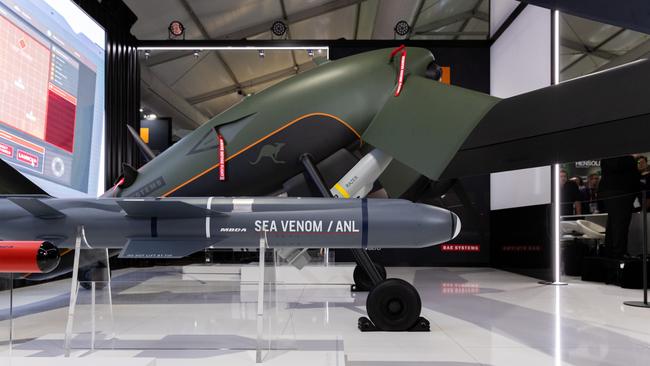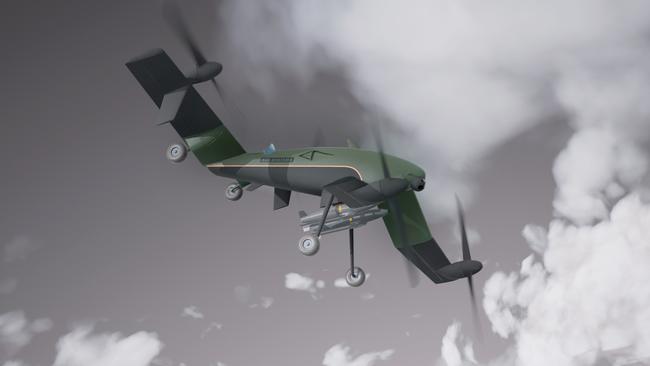Deadly new ‘Franken-drone’ unveiled by British defence giant
The dual wing, vertical take-off and landing quadcopter – developed in Australia – could be rapidly rolled out to the ADF.

A deadly new “Franken-drone” unveiled by British defence giant BAE at the Australian International Airshow could be rapidly rolled out to the ADF, giving it the ability to strike deep behind enemy lines without risking human pilots.
The dual wing, vertical take-off and landing quadcopter - developed in Australia - uses its propellers to take off like a helicopter but fly horizontally like a plane.
The reusable ‘Strix’ drone, named after a type of owl, can carry multiple guided missiles, and costs under $10m each - making it relatively expendable if lost in combat.
The Albanese government is desperate to acquire such a capability for the ADF, which has no armed drones more than two decades after they entered common use by Australia’s allies, making the Strix a prime contender for Australian use when it releases its defence strategic review in coming weeks.
The bizarre looking drone made its debut at the Avalon airshow, near Geelong, where observers noted its Frankenstein-like combination of different aircraft types.

BAE Systems Australia chief Ben Hudson said the Strix, which has a range of more than 500km and a payload of more than 200kg, was “unique”.
“The uniqueness is it combines the power and convenience of a vertical takeoff and landing aircraft, with the range and speed of conventional aircraft, like no other system on the market today,” he said.
It’s public debut came just a day after Australia’s Chief of Air Force Robert Chipman flagged an urgent push to acquire large numbers of low-cost killer drones to give the ADF greater “mass” to take on well-armed adversaries.
The company is marketing the platform as multi-mission capability, that could carry anti-tank weapons, act as a targeting platform for lying-range missiles, or a “loyal wingman” for attack helicopters.

It can carry a variety of payloads, including Hellfire missiles, laser-guided rockets, of BAE’s new ‘Razer’ low-cost precision guided munition.
Mr Hudson said the platform leveraged existing technologies to provide a cost effective capability that could be configured according to its mission and was upgradable in response to emerging technologies or threats.
“Strix could be ready for operational service as soon as 2026 and work is already underway on a Strix prototype.
“We’re excited that this is the first UAS (unmanned aerial system) of its kind to be developed in Australia, and look forward to working with partners across the country to deliver this capability to customers.”
The drone can be transported in a standard 20 foot container, making it easy to deploy on land and from naval platforms.
It was developed in-house with BAE’s own funds, and the company hopes to export the platform to overseas buyers, as well as provide it to the ADF.
Mr Hudson said the Australian-developed Razer missile offered a “powerful and affordable battlefield strike capability”, and could be produced domestically, providing Australia with a vital sovereign capability.
Air Marshal Chipman said the proliferation of low-cost drones on the Ukrainian battlefield had shown the importance of “low-cost, high-volume capabilities” in modern war fighting, and called for a cultural shift within the RAAF to help it embrace such new technologies.
“The impediments to boosting capability are often policy-related, procedural or cultural,” Air Marshal Chipman said.
“While advanced platforms teamed with cutting-edge and disruptive technologies can be game changers, we won’t realise their advantage without evolving our thinking.”
At least 56 international air force delegations are attending the Australian International Airshow this week, as defence giants and smaller industry players showcase their wares including an array of lethal unmanned systems.







To join the conversation, please log in. Don't have an account? Register
Join the conversation, you are commenting as Logout